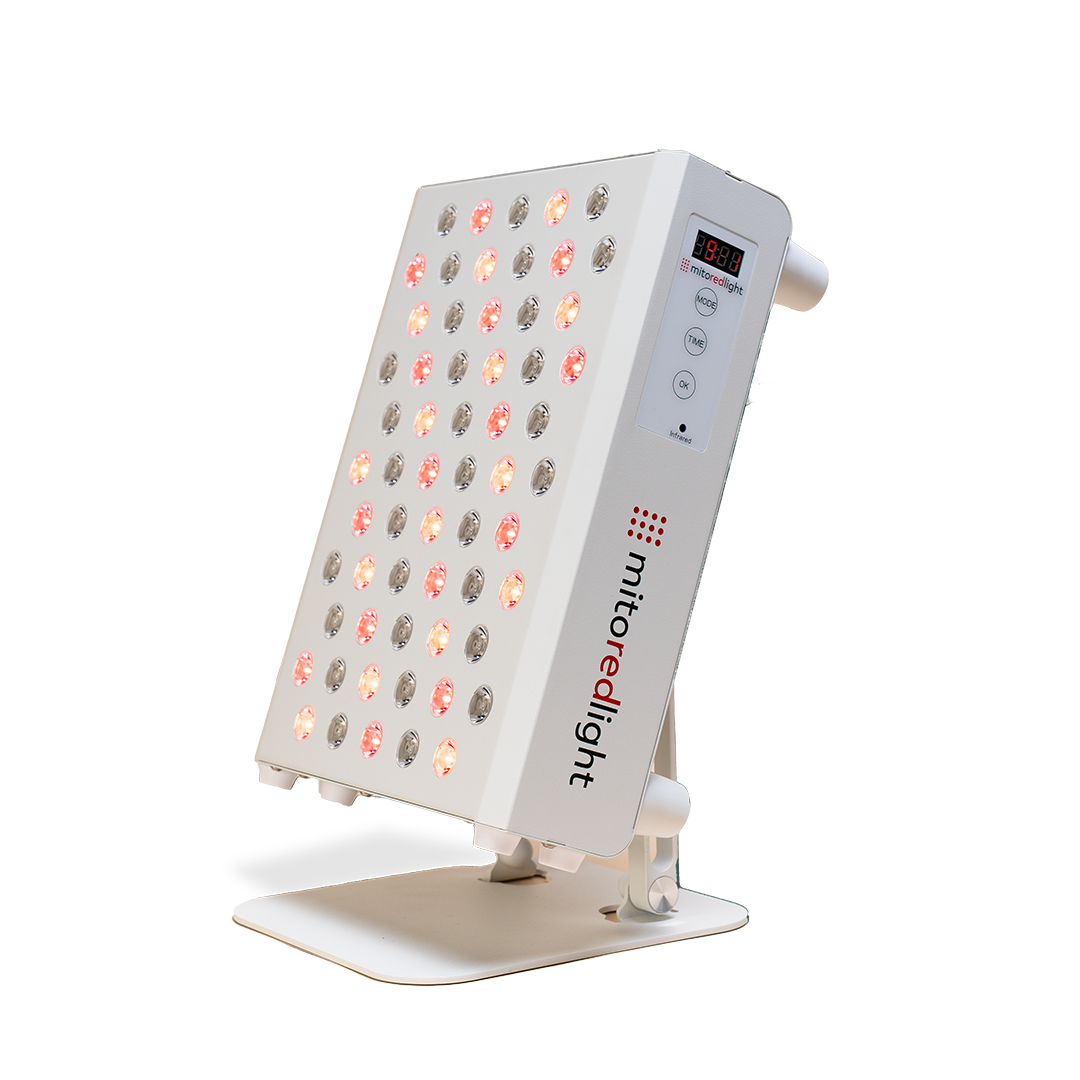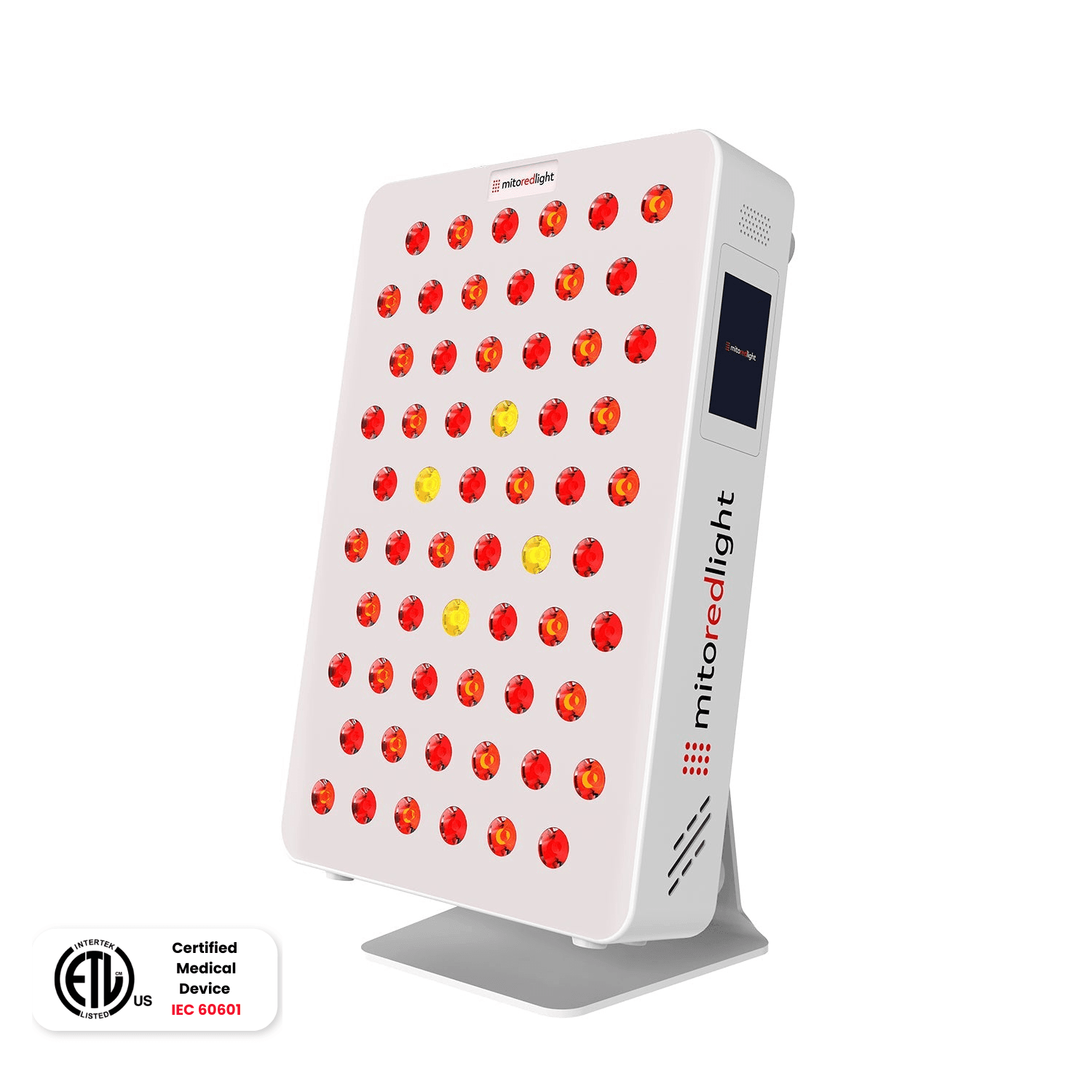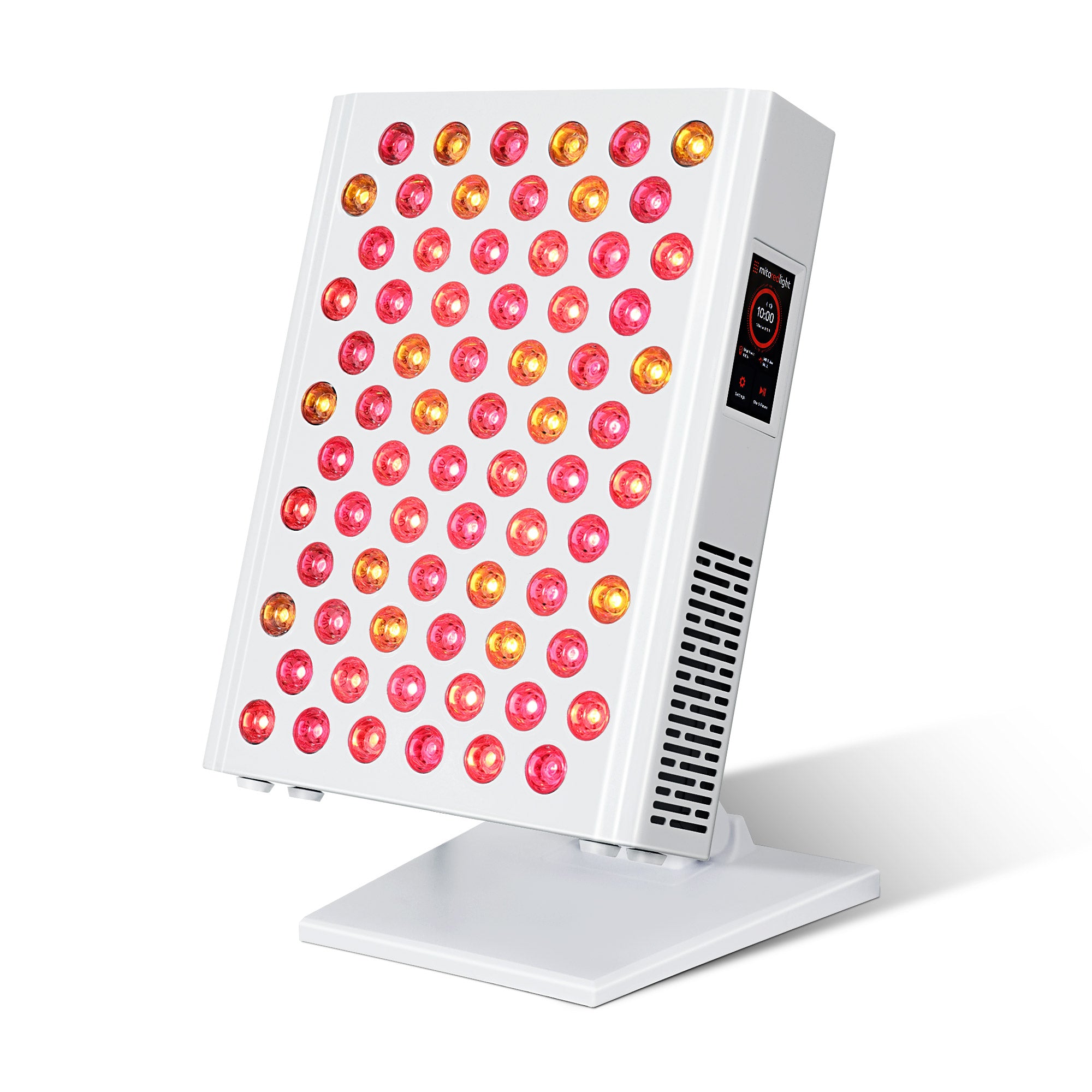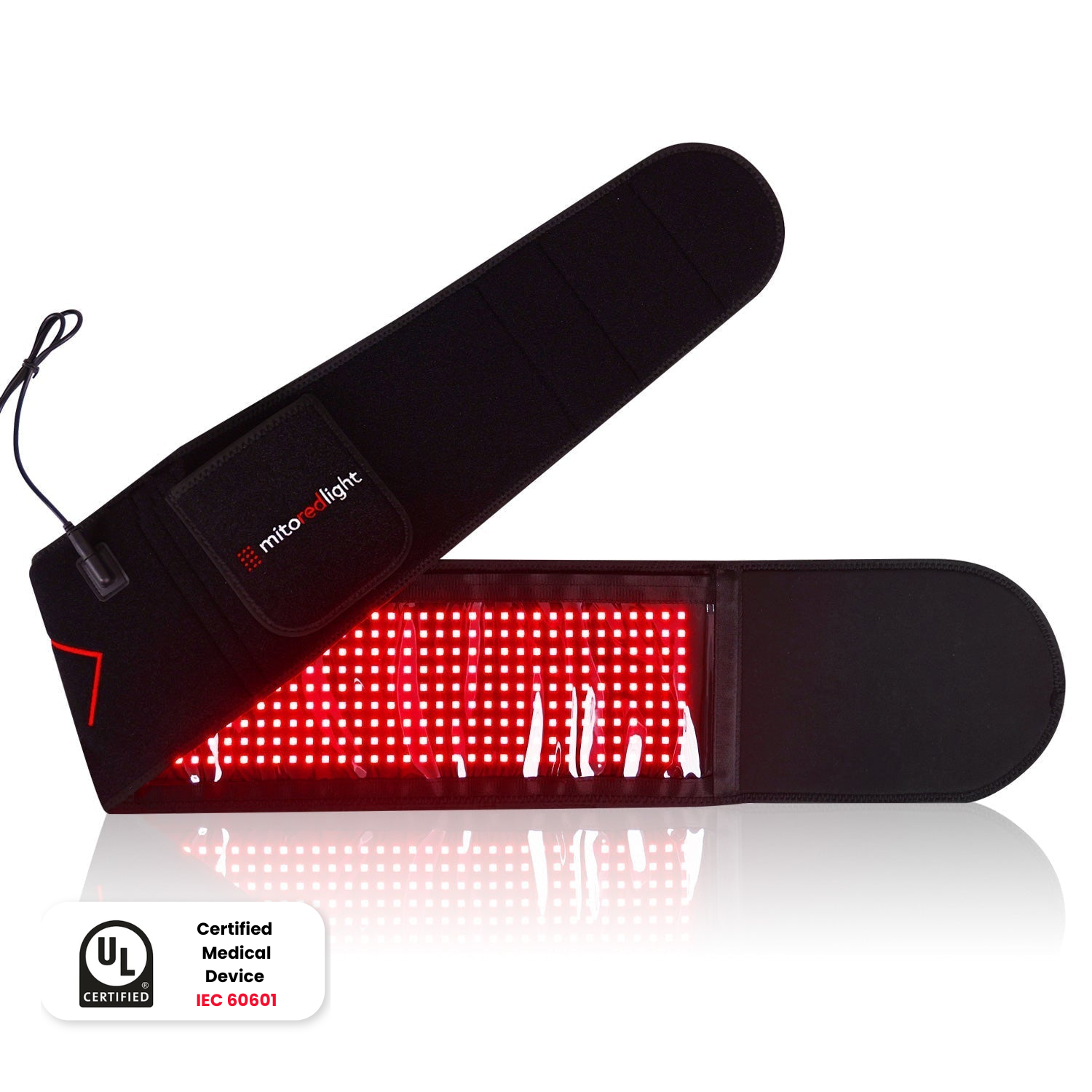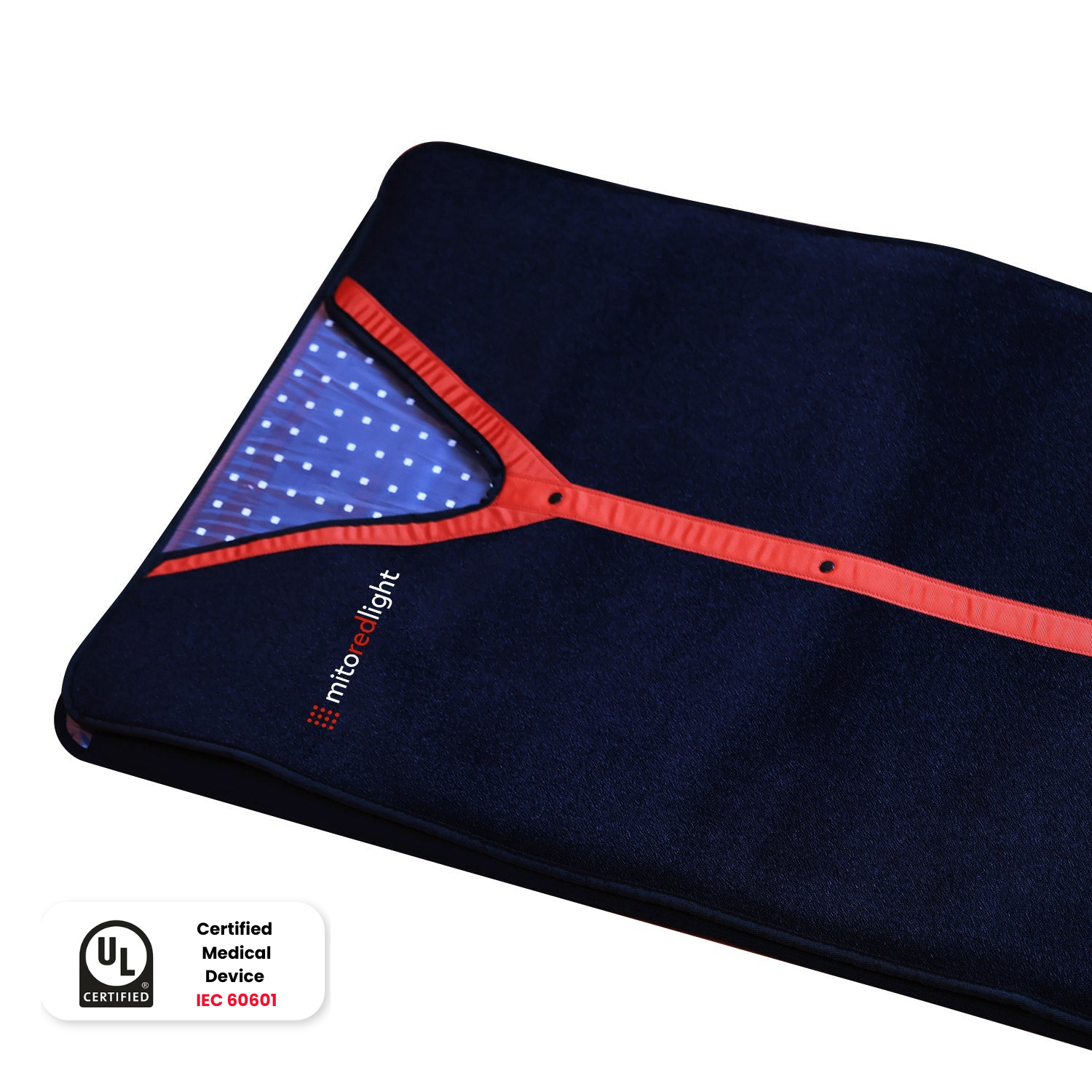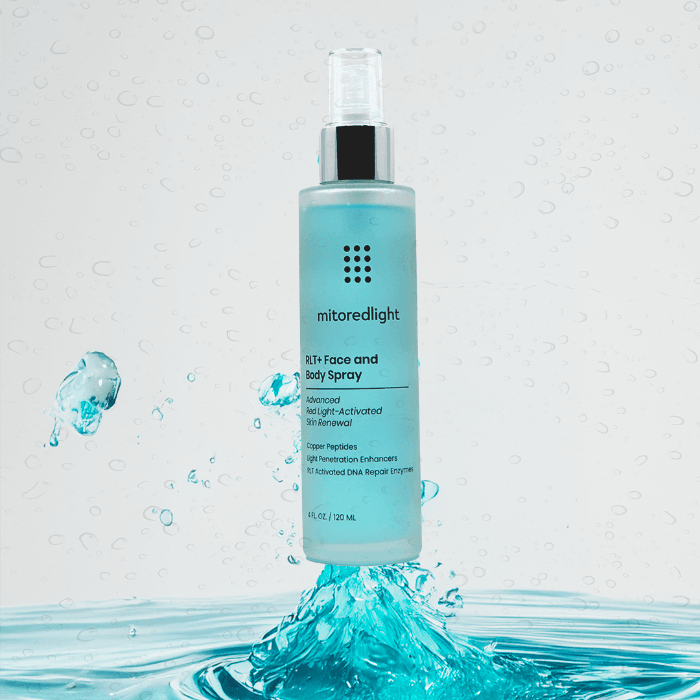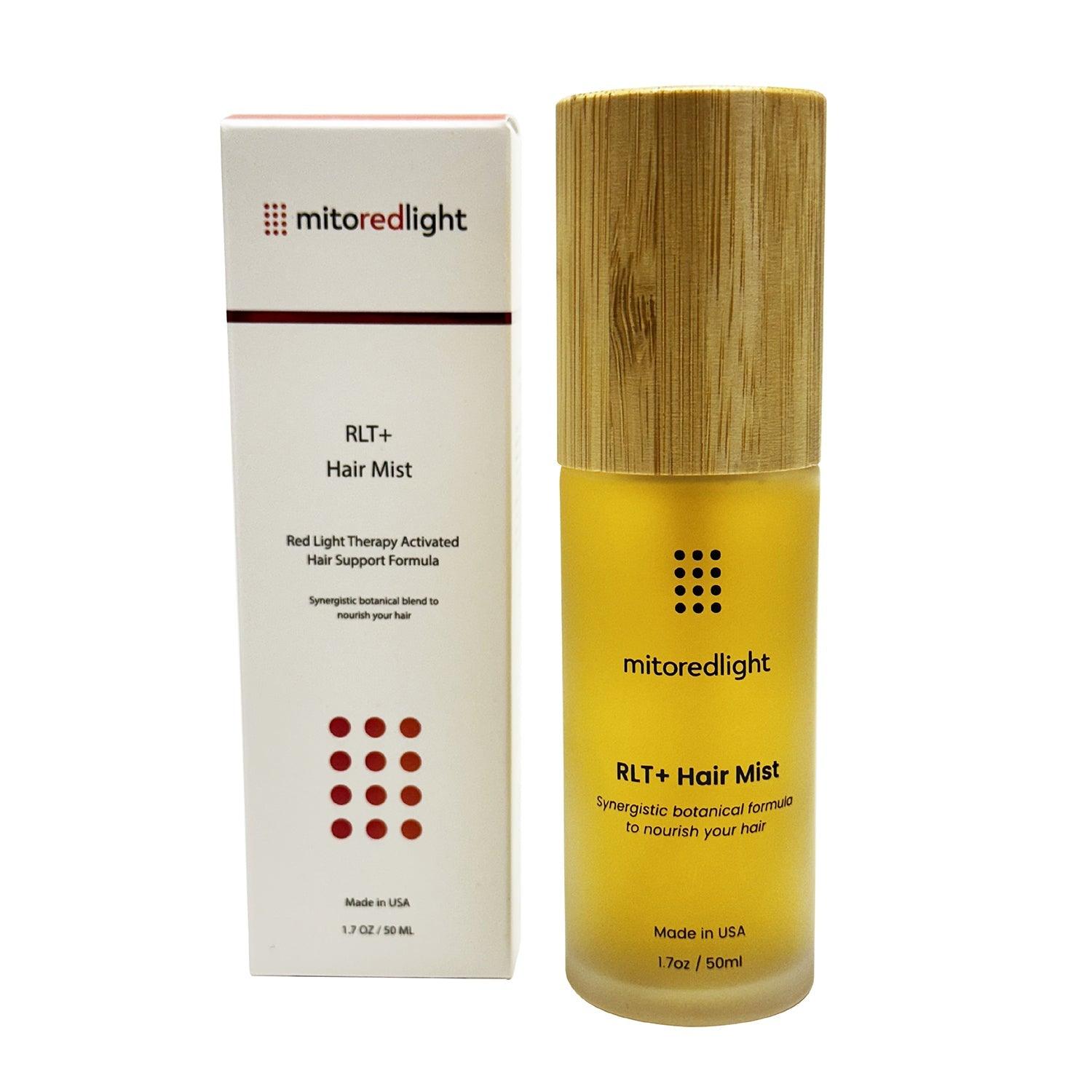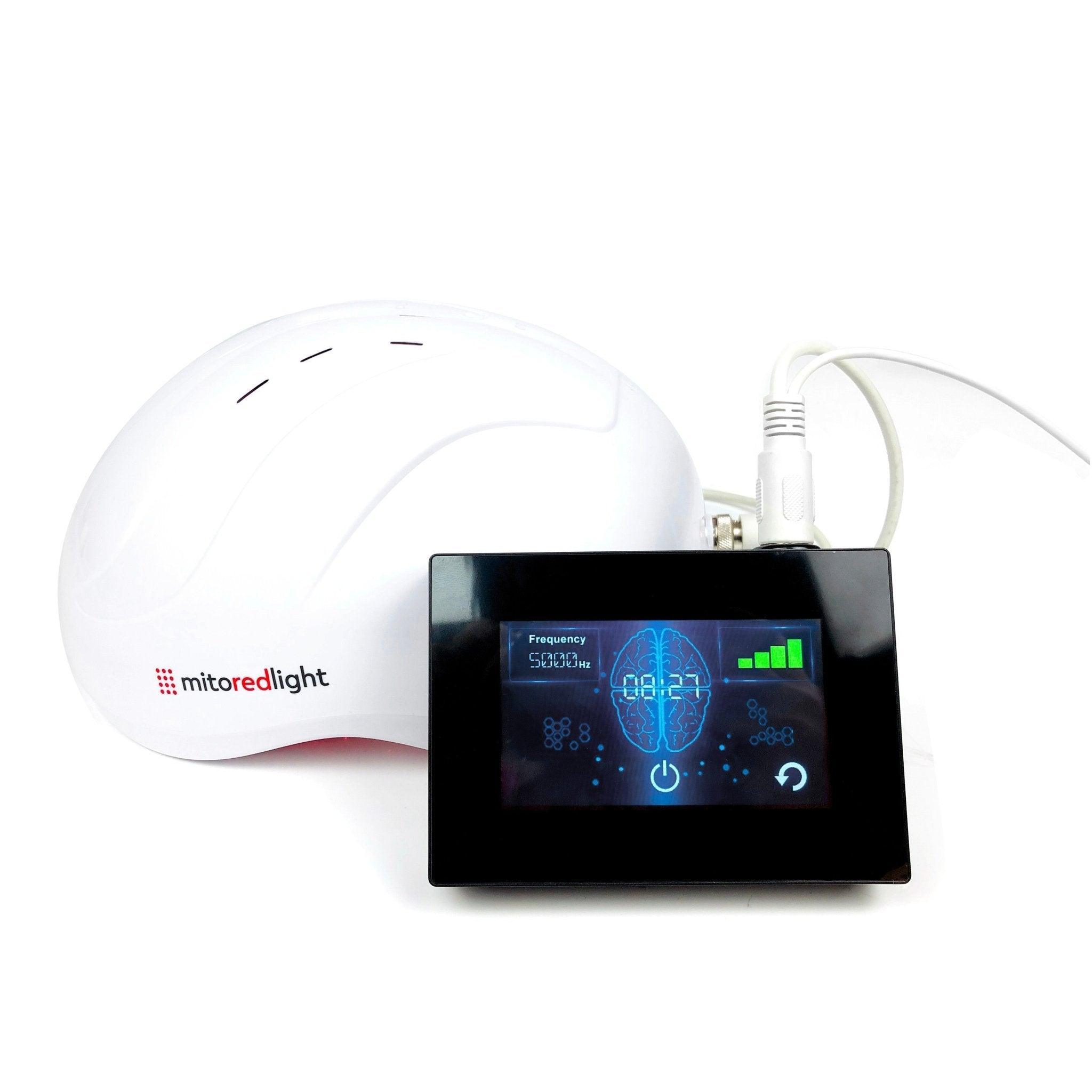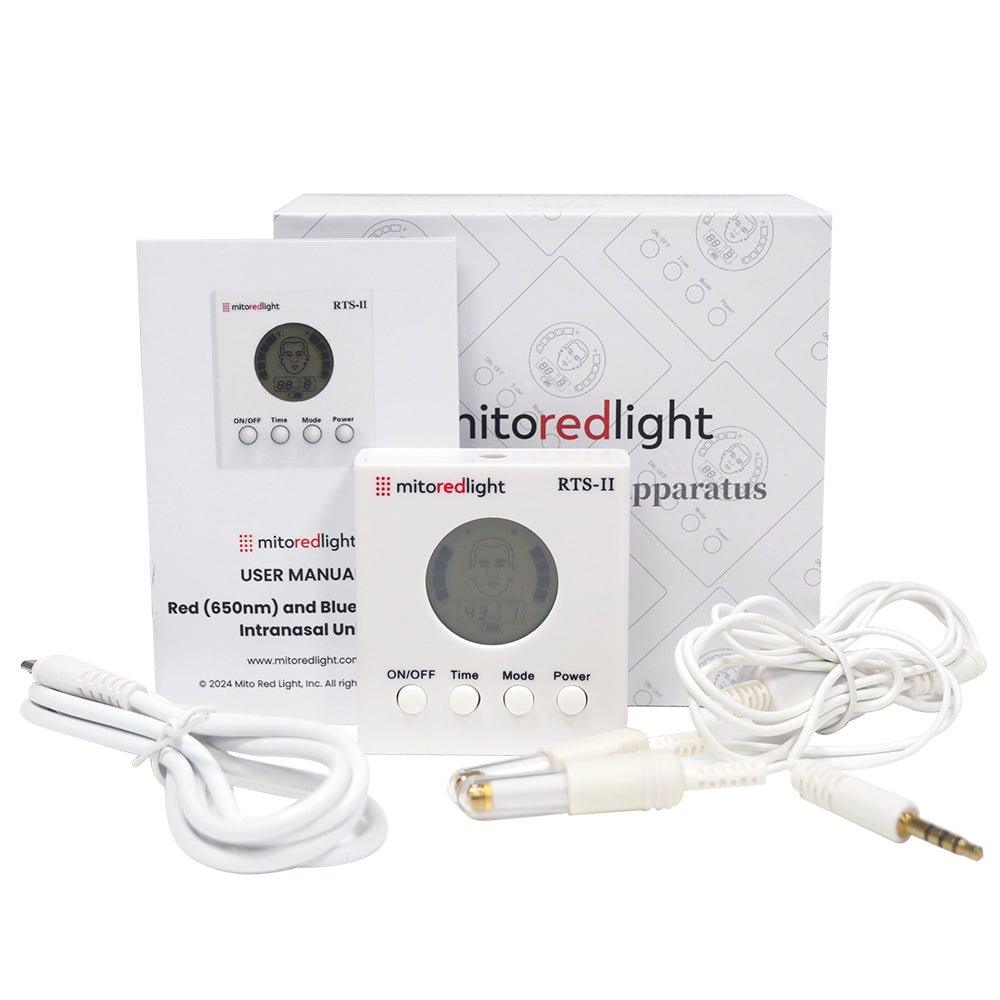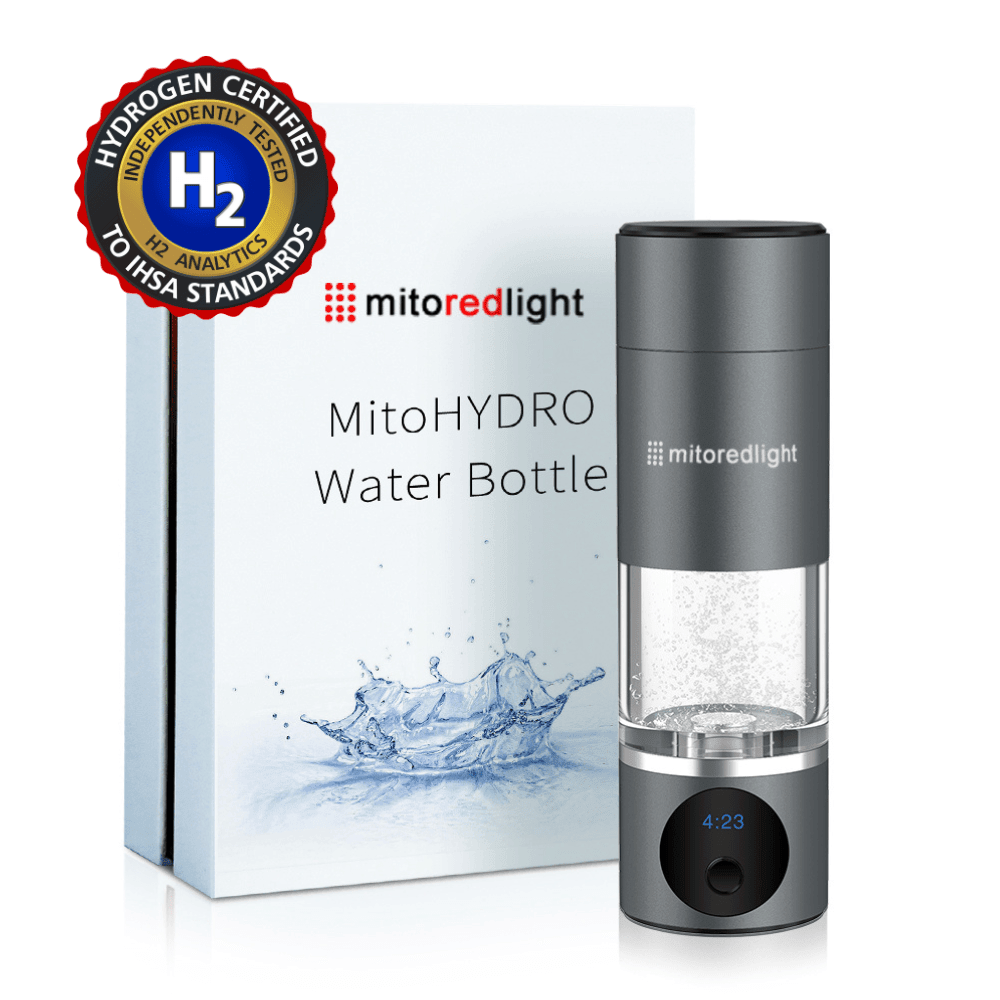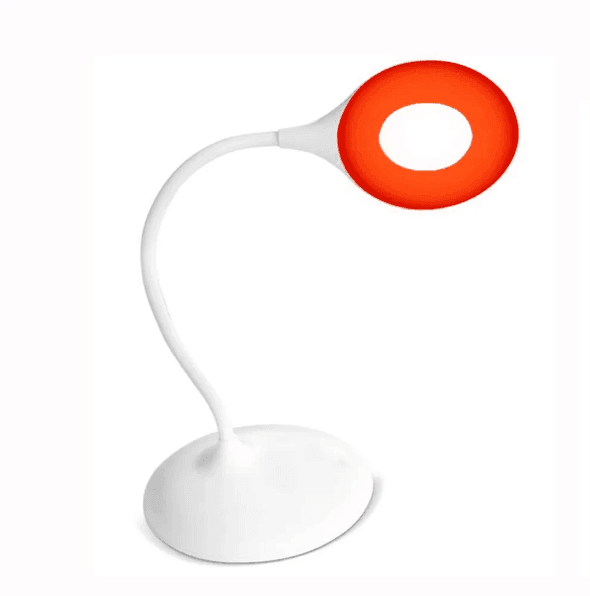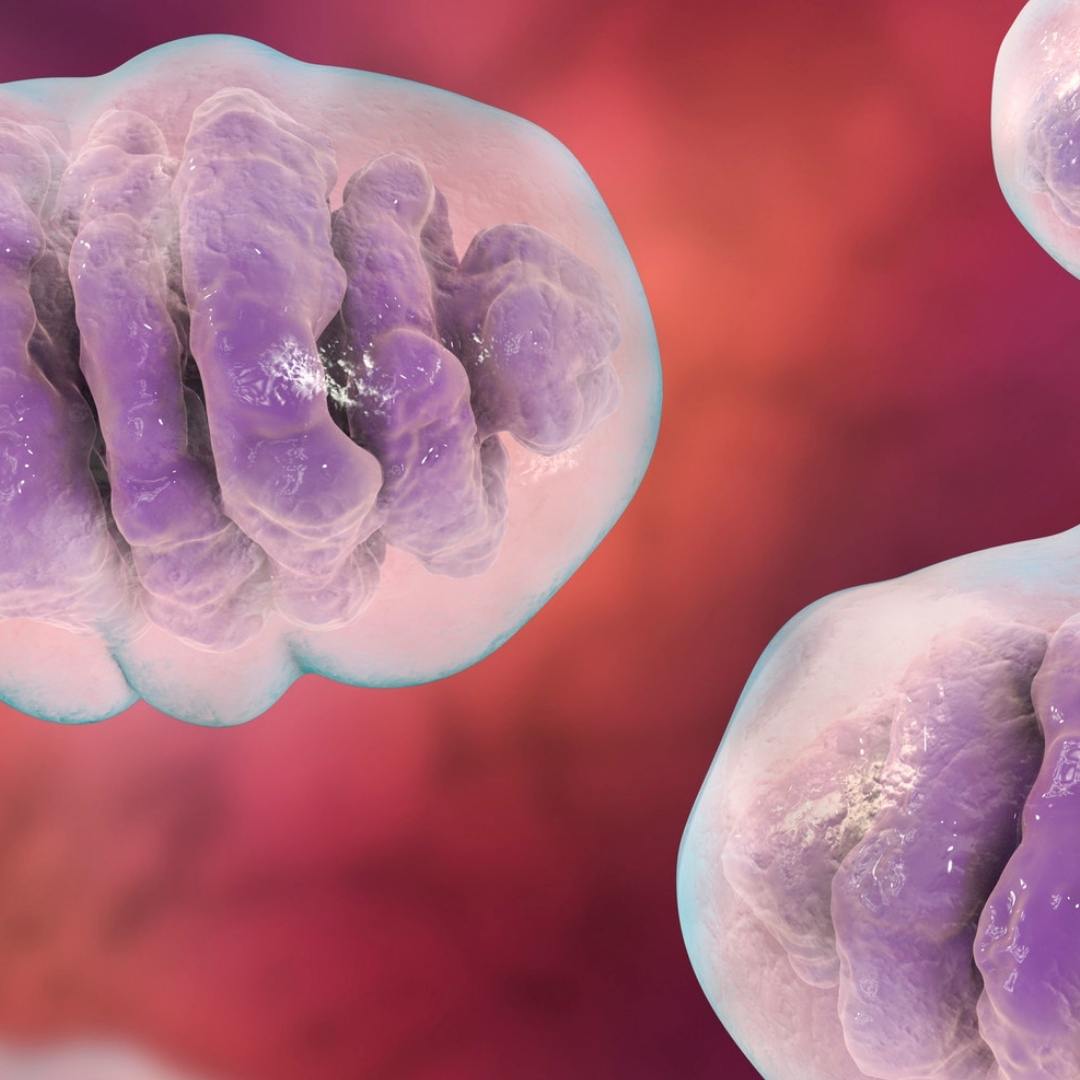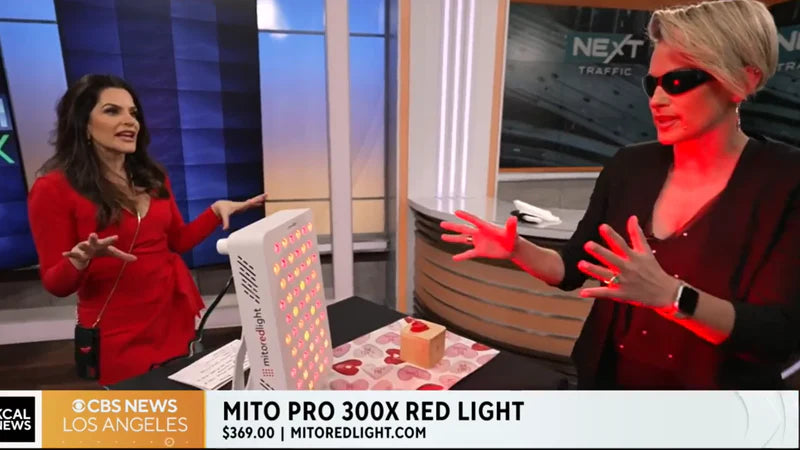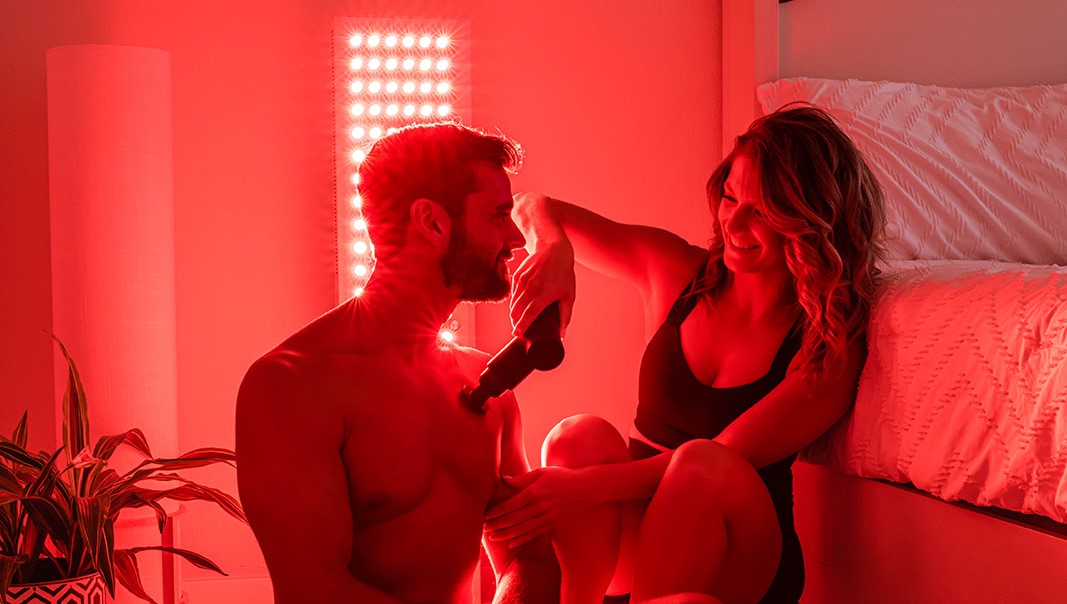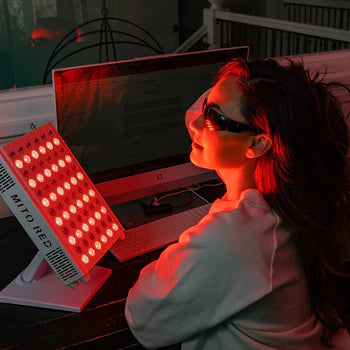DISCLAIMER: Mito Red Light devices are Class II wellness devices aimed at affecting the body through topical heating and supporting cellular function. The information provided in this article and on this site is for educational purposes only and is not intended to imply effectiveness of Mito Red Light devices for any specific application. The information provided in this article and on this site is not intended to diagnose, treat, cure, or prevent any disease, is not a substitute for consultation with a licensed medical provider and should not be construed as medical advice. Click here to read our article on potential contraindications of red light therapy..
Table of Contents
- MitoPRO+ Series: The Most Advanced Red Light Therapy Devices Ever Created
- Modular Design
- Complete Flexibility
- Integrated Digital Control Panel
- Scientifically Driven
- Hair/Scalp Health and Hair Regrowth
- Exercise Performance and Muscle Recovery
- Skin Health
- Oral Health
- 830nm = Peak Near Infrared (NIR) Absorption Spectra
- Bone and Joint Health
- Sports Injuries
- Carpal Tunnel
- Beware LED "Fairy Dusting"
MitoPRO+ Series: The Most Advanced Red Light Therapy Devices Ever Created.
We are very excited to announce the advanced MitoPRO+ series! The MitoPRO+ Series devices are the most advanced red light therapy devices available anywhere.
Modular Design
Physically connect your panels together. The MitoPRO+ series modular design allows for full customization and multiple configurations to support any in-home or commercial red light therapy application. Build as you go! Control multiple panels with the new remote control.
Complete Flexibility
Use Red (630nm / 660nm) alone, Near Infrared (830nm / 850nm) alone, or both at the same time!
Integrated Digital Control Panel
Integrated digital control panel with built in timer allows you to control your entire light array with the push of a single button!
Scientifically Driven
Available only from Mito Red, the MitoPRO series incorporates the four most bio-active wavelengths, 630nm / 660nm (Red) and 830nm / 850nm (Near Infrared). This unique configuration is aimed at delivering increased light energy at the parts of the spectra, which maximize cytochrome c oxidase activation.
While 660nm and 850nm LED light is very well studied and proven, the MitoPRO series "pumps up the bass" by adding peak LED wavelengths of 630nm and 830nm, which research shows will further enhance Cytochrome C Oxidase activation. This can be seen graphically below and is outlined in the seminal paper by Karu et al. [10] outlining the action spectra for both red and near infrared light.
Karu explains: "An action spectrum is a plot of the relative effectiveness of different wavelengths of light in causing a particular biological response, and under ideal conditions, it should mimic the absorption spectrum of the molecule that is absorbing the light and whose photochemical alteration causes the effect."
The MitoPRO series with both 630nm and 660nm LEDs is able to more optimally cover BOTH of the peak points in the red spectrum while emitting light energy as low as 580nm. See the picture below.

In addition the 630nm peak LED wavelength has been shown in many research studies to be beneficial for the following:
DISCLAIMER: Mito Red Light (including the MitoPRO) devices are not clinically proven to diagnose, treat, cure or prevent any medical condition. Mito Red Light devices are general wellness devices aimed at affecting the body through topical heating. The scientific studies below are referenced only to further explain why we chose to incorporate these specific additional wavelengths into the MitoPRO devices.
Hair / Scalp Health & Hair Regrowth
Researchers have found 630nm to be helpful with both frontal fibrosing alopecia and Lichen planopilaris. Lichen planopilaris (LPP) affects the scalp and hair. It is a form of lichen planus, an inflammatory condition affecting the skin and mucous membranes.
Another randomized, double-blind, controlled trial [7] looking at hair growth concluded “after 24 weeks of treatment, the LLLT (light therapy) group showed significantly greater hair density than the sham device group. Mean hair diameter improved statistically significantly more in the LLLT group than in the sham device group.”
 |
 |
 MitoADAPT MAX |
Exercise Performance and Muscle Recovery
One randomized, double-blind, placebo-controlled trial involving sixteen male athletes concluded that 630nm phototherapy improves performance in Wingate anaerobic exercise. [4]
Another study [5] concluded that after 630nm LED Therapy (LEDT), “muscle soreness, muscle strength loss, and ROM (range of motion) impairments were significantly reduced up to 96 h after a damaging eccentric exercise bout for the LEDT group compared with the PLACEBO group”.
The authors elaborated that just a SINGLE LEDT (630 nm) intervention immediately after a damaging eccentric exercise bout was effective in terms of attenuating muscle soreness and muscle strength loss, and ROM impairments.
Another study investigated the effect of 630nm light emitting diode therapy (LEDT) on exercise-induced hand muscle fatigue. The study concluded that active LEDT recovers muscle fatigue faster than passive rest. [6]
All three studies referenced above were ‘gold standard’ randomized control trials and should be exciting reading for anybody looking to perform better athletically and / or recover faster from exercise!
Skin Health
One study [8] examined photorejuvenation of the face with a combination of microneedling, 630nm red light and aminolevulinic acid (ALA). The researchers found statistically significant improvement in the global photoaging scores, as well as sub‐components of the scale (fine lines, mottled pigmentation, sallowness, tactile roughness, and telangiectasias) at 3 months as compared with baseline live assessment, and at 6‐month live assessment compared with the 3 months.
Another study [9] examined the effects of 630nm LED therapy on sensitive skin syndrome. Sensitive skin (SS) syndrome is defined by the occurrence of unpleasant sensations in response to stimuli that should normally not induce such sensations. It affects ~50% of women and 40% of men and can impact the quality of life.
The treatment consisted of red LED light exposure twice a week until a significant reduction in SS-10 with a maximal treatment length of 8 weeks. The primary outcome was defined by a 60% decrease in the SS-10 score compared to the baseline.
Twenty-eight subjects (93.3%, 95% CI 77.9 to 99.2%) achieved the primary outcome. A significant reduction in SS-10 was achieved in 77% of subjects in six sessions or fewer. The mean (SD) SS-10 scores were 54.7 (12.1) at inclusion, 14.4 (6.0) at the last session and 13.9 (7.5) 2 months after the last session, suggesting that the benefits persist for a few weeks. These results are shown graphically below:


Oral Health
Multiple human studies have found 630nm light therapy to help reduce the severity and duration of chemotherapy-induced oral mucositis (COM) [11], [12], [13]. In fact, one study found that the light therapy reduced the mean duration for COM healing from 12 days down to 4.8 days!
Several studies have examined the use of 630nm light in aiding Oral Lichen Planus (OLP) [14, 15, 16] Oral Lichen Planus is a mucosal subtype of lichen planus. One study found that 630nm LLLT was as effective in treating OLP as topical corticosteroid therapy without any adverse effects. Another study also concluded that 630nm LLLT was effective in the treatment of the erosive-atrophic forms of OLP in adult patients.
830nm = Peak Near Infrared (NIR) Absorption Spectra
Karu et al. [10] demonstrated that 830nm was the peak Near Infrared absorption spectra. Hence the MitoPRO series includes 830nm to complement the extensively studied 850nm NIR wavelength. In addition, 830nm has shown benefits in research studies for various applications.
Bone and Joint Health
Multiple human studies have found 830nm light therapy to be beneficial for bone and joint health. One study [17] examined 830nm LLLT in the healing from mandibular distraction osteogenesis surgery and found faster healing and improved mineralization. Another study [18] examined the impact of 830nm LLLT on closed bone fracture (CBF) of the wrist and hand. The study concluded that 830nm "LLLT can relieve pain and improve the healing process of CBFs in the human wrist and hand".
A plethora of 'gold standard' human randomized controlled trials [18,19,20] have demonstrated 830nm NIR light to benefit osteoarthritis. Osteoarthritis is a common form of arthritis, typically with onset during middle or old age, that is characterized by progressive degenerative changes in the cartilage of one or more joints.
Sports Injuries
One study [21] found examined 830nm LLLT in reducing return-to-play (RTP) time for various injuries in university athletes. The study concluded, "830nm LED phototherapy significantly and safely reduced the RTP in dedicated university athletes over a wide range of injuries with no adverse events." Another study [22] summarizing LLLT use in a hospital setting concluded that 830nm "LLLT is an effective treatment for sports injuries, particularly jumper's knee, tennis elbow and Achilles tendinitis."
Carpal Tunnel
Multiple studies [23,24,25] have found 830nm light therapy to be beneficial for carpal tunnel syndrome. One study evaluated the therapeutic efficacy of ultrasound and LLLT combined with gliding exercises. The authors concluded, "A decrease in sensory impairments, improvement in visual analog scale, hand grip strength, and the Boston Questionnaire results were significant in all patients after therapy. No adverse effects were observed."
Beware LED "Fairy Dusting"
Fairy Dusting is a common marketing trick often seen in the cosmetic and supplement industries. Fairy dusting is when an active ingredient is added to a product at a low level just so the company can use it in its marketing claims. When you see beneficial ingredients highlighted on a label, you may feel more inclined to buy a product in the hopes of reaping the benefits of said ingredients. Sadly though, these ingredients aren’t included in large enough amounts to actually make a difference. Thus emerged the term fairy-dusting—including a mere “sprinkle” of the good stuff.
660nm and 850nm LEDs have become the de facto standard in red light therapy devices, in large part because they are easier and CHEAPER to source. Some "less than fully transparent companies" may advertise that they are incorporating 630nm and/or 830nm LEDs but leave for the fine print that these LEDs account for only 5% or 10% of the LEDs in their panel.
At Mito Red, we have made the logical (albeit more costly) design decision to evenly distribute the four wavelengths, 25% each, across the face of the MitoPRO panel. This ensures even coverage of each of the four wavelengths, eliminating any 'polka-dot' effect and MAXIMIZING EFFICACY. At Mito Red, we are not interested in marketing sleight of hand. We use our own products daily and are committed to innovation. We are committed to designing and offering the most effective red light therapy products on the market period.
The spectral graph below from professional diagnostic testing performed at ITL Boulder shows the gorgeous distribution of energy across the active red and NIR spectra that result from the unique MitoPRO design.
To summarize, the MitoPRO series incorporates four peak LED wavelengths 630nm / 660nm (Red) and 830nm / 850nm (Near Infrared). This better targets the parts of the spectra which maximize cytochrome c oxidase activation while emitting light energy across the entire optimal portion (~580nm up to ~910nm) of the "Optical Window".

REFERENCES
[1] Illumination with 630 nm Red Light Reduces Oxidative Stress and Restores Memory by Photo-Activating Catalase and Formaldehyde Dehydrogenase in SAMP8 Mice
[2] Effectiveness of low-level laser therapy in lichen planopilaris
[3] Application of superluminescent diodes (sLED) in the treatment of scarring alopecia - A pilot study
[4] Ergogenic Effects of Photobiomodulation on Performance in the 30-Second Wingate Test: A Randomized, Double-Blind, Placebo-Controlled, Crossover Study
[5] Light-emitting diode phototherapy improves muscle recovery after a damaging exercise
[6] Assessing the Therapeutic Effect of 630 nm Light-Emitting Diodes Irradiation on the Recovery of Exercise-Induced Hand Muscle Fatigue with Surface Electromyogram
[7] Low‐Level Light Therapy for Androgenetic Alopecia: A 24‐Week, Randomized, Double‐Blind, Sham Device–Controlled Multicenter Trial
[8] Photodynamic photorejuvenation of the face with a combination of microneedling, red light, and broadband pulsed light
[9] Efficacy and Tolerability of Phototherapy With Light-Emitting Diodes for Sensitive Skin: A Pilot Study
[10] ACTION SPECTRA -Their Importance for Low Level Light Therapy
[11] Light-emitting diode therapy in chemotherapy-induced mucositis
[12] Low Level Laser Therapy in Management of Chemotherapy-Induced Oral Mucositis: Prophylaxis or Treatment?
[13] Evaluation of the effect of low level laser on prevention of chemotherapy-induced mucositis
[14] Efficacy of photodynamic therapy or low level laser therapy against steroid therapy in the treatment of erosive-atrophic oral lichen planus
[15] Use of low level laser therapy for oral lichen planus: report of two cases
[16] A comparative pilot study of low intensity laser versus topical corticosteroids in the treatment of erosive-atrophic oral lichen planus
[17] The Radiological and Stereological Analysis of the Effect of Low-Level Laser Therapy on the Mandibular Midline Distraction Osteogenesis
[18] High-intensity versus low-level laser therapy in the treatment of patients with knee osteoarthritis: a randomized controlled trial
[19] Efficacy of low-level laser therapy applied at acupuncture points in knee osteoarthritis: a randomised double-blind comparative trial
[20] The effect of low-level laser in knee osteoarthritis: a double-blind, randomized, placebo-controlled trial
[21] 830 nm light-emitting diode (led) phototherapy significantly reduced return-to-play in injured university athletes: a pilot study
[22] Low level laser therapy for sports injuries
[23] The Effects of Nerve and Tendon Gliding Exercises Combined with Low-level Laser or Ultrasound Therapy in Carpal Tunnel Syndrome
[24] LOW-LEVEL LASER THERAPY AFTER CARPAL TUNNEL RELEASE
[25] Comparison of splinting and splinting plus low-level laser therapy in idiopathic carpal tunnel syndrome
